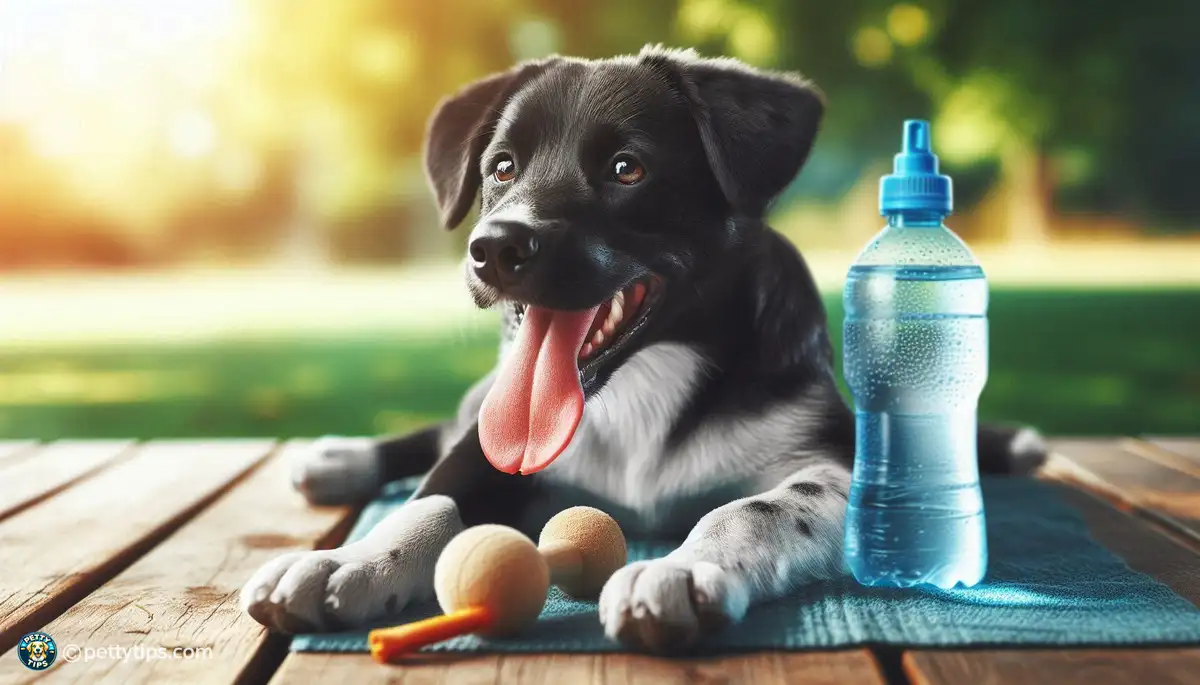
Decoding Canine Communication: Understanding Dog Body Language
Leon Jenks - Sep 29, 2024 - 6 min read


Overexertion in active dog breeds can sneak up on both owners and their pets if they're not attentive. Dogs, especially those with boundless energy, may not readily show signs of exhaustion. As pet parents, it's crucial to be vigilant. Common signs of overexertion include excessive panting, reluctance to continue activity, stumbling, and dehydration. Paying close attention to your dog's behavior during exercise can help catch these signs early on.
Regular monitoring during physical activities is essential to prevent overexertion. Dogs, especially high-energy breeds, might push themselves beyond their limits if not supervised. By keeping a close eye on your furry friend, you can intervene before they become overly fatigued. This monitoring involves observing their breathing rate, hydration levels, and overall demeanor. Taking breaks and adjusting the intensity and duration of exercise according to your dog's condition can help prevent overexertion.
Adjusting the intensity of exercise sessions is crucial, especially for active dog breeds prone to overexertion. While it's essential to provide ample physical activity to keep your furry friend healthy and happy, it's equally important not to overdo it. Start with moderate activities and gradually increase the intensity over time. Pay attention to your dog's response and adjust accordingly. Balancing exercise with rest periods is key to preventing overexertion and ensuring your dog's well-being.
Gradually building your dog's endurance through a structured training plan is essential in preventing overexertion. Just like humans, dogs need time to adapt to increased physical activity levels. Begin with short, low-intensity workouts and gradually increase the duration and intensity over several weeks. Incorporating activities like walking, jogging, and play sessions into your dog's routine can help improve their stamina while minimizing the risk of overexertion.
Rest days are just as important for dogs as they are for humans. Integrating regular rest days into your dog's exercise regimen allows their bodies to recover and rebuild strength. Overexertion often occurs when dogs are pushed to exercise without adequate rest periods in between. Plan rest days where your furry friend can enjoy light activities or simply relax at home. Pay attention to their energy levels and adjust the frequency of rest days accordingly.
One of the most critical aspects of preventing overexertion is learning to listen to your dog's body cues. Dogs communicate through body language, and it's up to pet owners to interpret these signals accurately. If your dog seems tired or reluctant to continue exercising, it's essential to respect their limits and give them a break. Pushing a dog beyond their physical capabilities can lead to serious health issues, including heatstroke and muscle strain. By tuning into your dog's needs, you can help prevent overexertion and keep them safe during physical activities.
proper nutrition plays a vital role in maintaining your dog's overall health and preventing overexertion. Active breeds require a balanced diet rich in nutrients to support their energy needs. Choose high-quality dog food that provides a balance of protein, carbohydrates, fats, vitamins, and minerals. Consult with your veterinarian to determine the appropriate serving size and feeding schedule based on your dog's age, weight, and activity level.
Staying hydrated is essential for dogs, especially during periods of physical activity. Dehydration can quickly lead to overheating and exhaustion, increasing the risk of overexertion. Always provide access to fresh, clean water before, during, and after exercise sessions. Consider bringing a portable water bottle and bowl when exercising outdoors with your dog. Pay attention to signs of dehydration, such as excessive panting, dry gums, and lethargy, and offer water immediately if you notice any of these symptoms.
In addition to water, electrolytes play a crucial role in maintaining your dog's hydration levels during intense exercise. Electrolyte supplements can help replenish lost minerals and prevent dehydration, particularly in hot or humid conditions. However, it's essential to consult with your veterinarian before introducing any new supplements into your dog's diet. They can provide guidance on the appropriate type and dosage based on your dog's individual needs.
The terrain on which your dog exercises can significantly impact their risk of overexertion and injury. Opt for soft surfaces like grass or dirt when possible, as they are easier on your dog's joints and paws. Avoid hot pavement, sharp rocks, or uneven terrain that could cause discomfort or injury. Additionally, be mindful of environmental factors such as extreme temperatures and humidity, as these can increase the risk of overexertion and heat-related illnesses.
Supervision is key to creating a safe exercise environment for your dog. Whether you're hiking, running, or playing fetch in the backyard, always keep a close eye on your furry friend. Watch for signs of fatigue or distress and be prepared to intervene if necessary. Additionally, ensure your dog is trained to respond to basic commands like "stop" and "come," which can help prevent overexertion and keep them out of harm's way.
Investing in proper gear can help prevent overexertion and injury during physical activities with your dog. Consider using a harness instead of a collar, as it distributes pressure more evenly and reduces strain on your dog's neck and throat. If you're jogging or biking with your dog, choose a hands-free leash that allows you to maintain control while keeping your hands free. Additionally, protect your dog's paws with booties or paw wax if you'll be walking or running on rough terrain.
Knowing when to stop is crucial in preventing overexertion and keeping your dog safe during physical activities. Pay close attention to your dog's behavior and watch for signs of fatigue or distress. If your furry friend seems tired, reluctant to continue, or is exhibiting unusual symptoms, it's essential to stop exercising immediately and provide rest and hydration. Pushing a dog beyond their limits can lead to serious health consequences, so err on the side of caution when in doubt.
Heatstroke is a severe condition that can occur when dogs are exposed to high temperatures for extended periods, especially during intense exercise. Knowing the signs of heatstroke, such as excessive panting, drooling, rapid heartbeat, and weakness, is essential for preventing overexertion-related emergencies. If you suspect your dog is suffering from heatstroke, move them to a cool, shaded area immediately and offer water. Seek veterinary attention promptly, as heatstroke can be life-threatening if left untreated.
If you're concerned about your dog's health or suspect they may have overexerted themselves, don't hesitate to seek veterinary care. Prompt intervention can help prevent serious complications and ensure your furry friend receives the necessary treatment. Your veterinarian can assess your dog's condition, provide supportive care, and offer guidance on how to prevent overexertion in the future. Remember, it's always better to be safe than sorry when it comes to your dog's well-being.